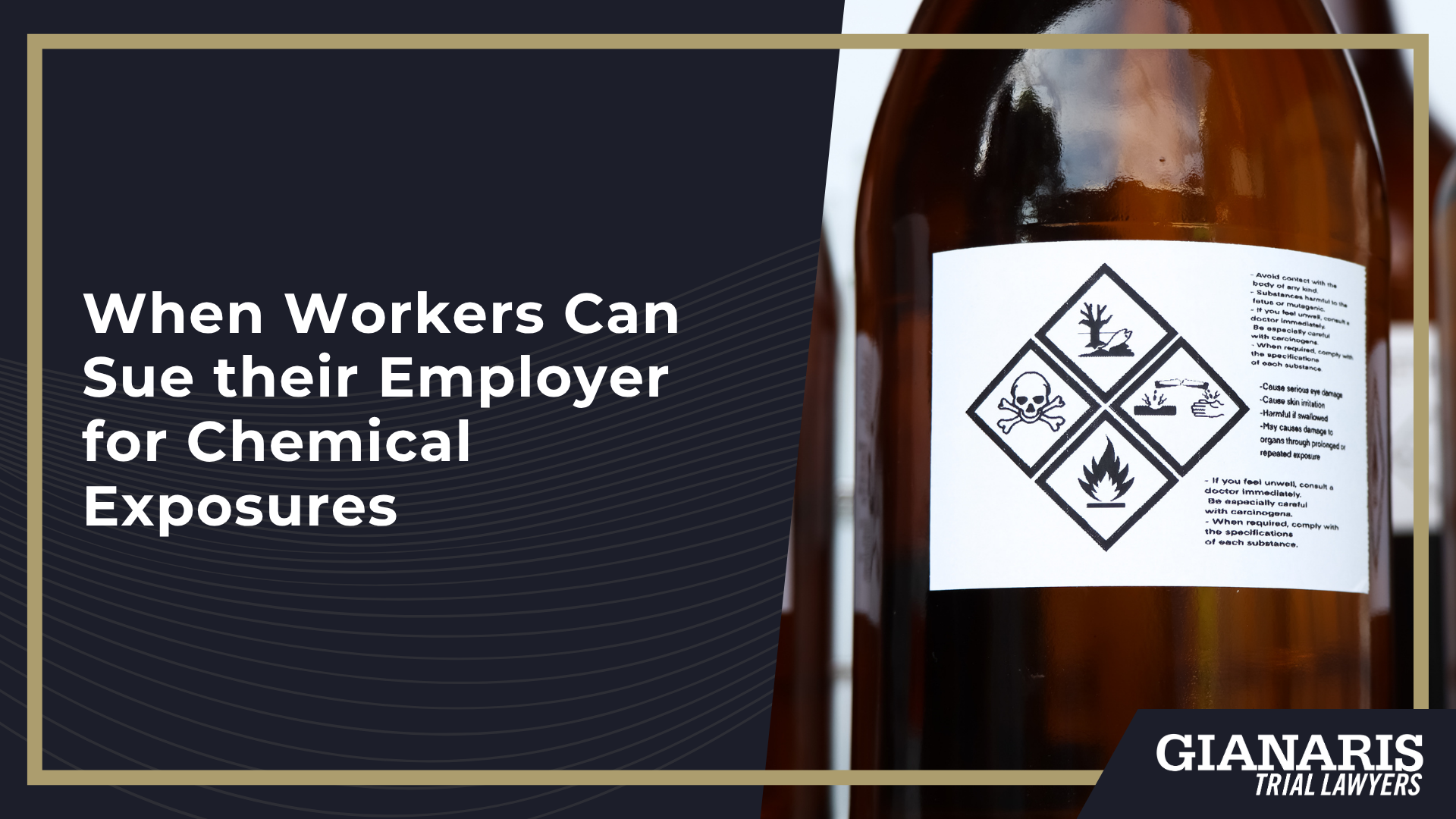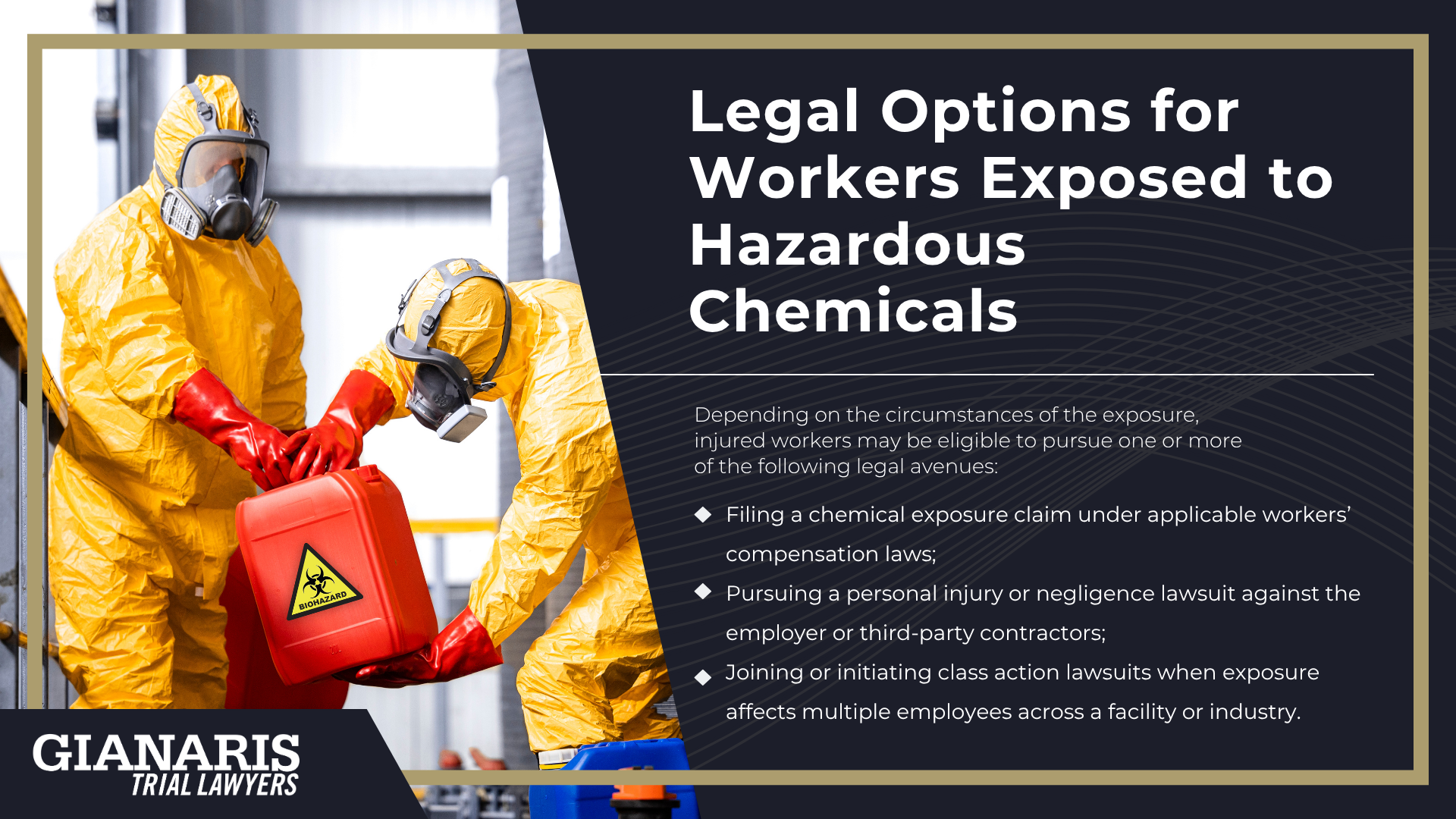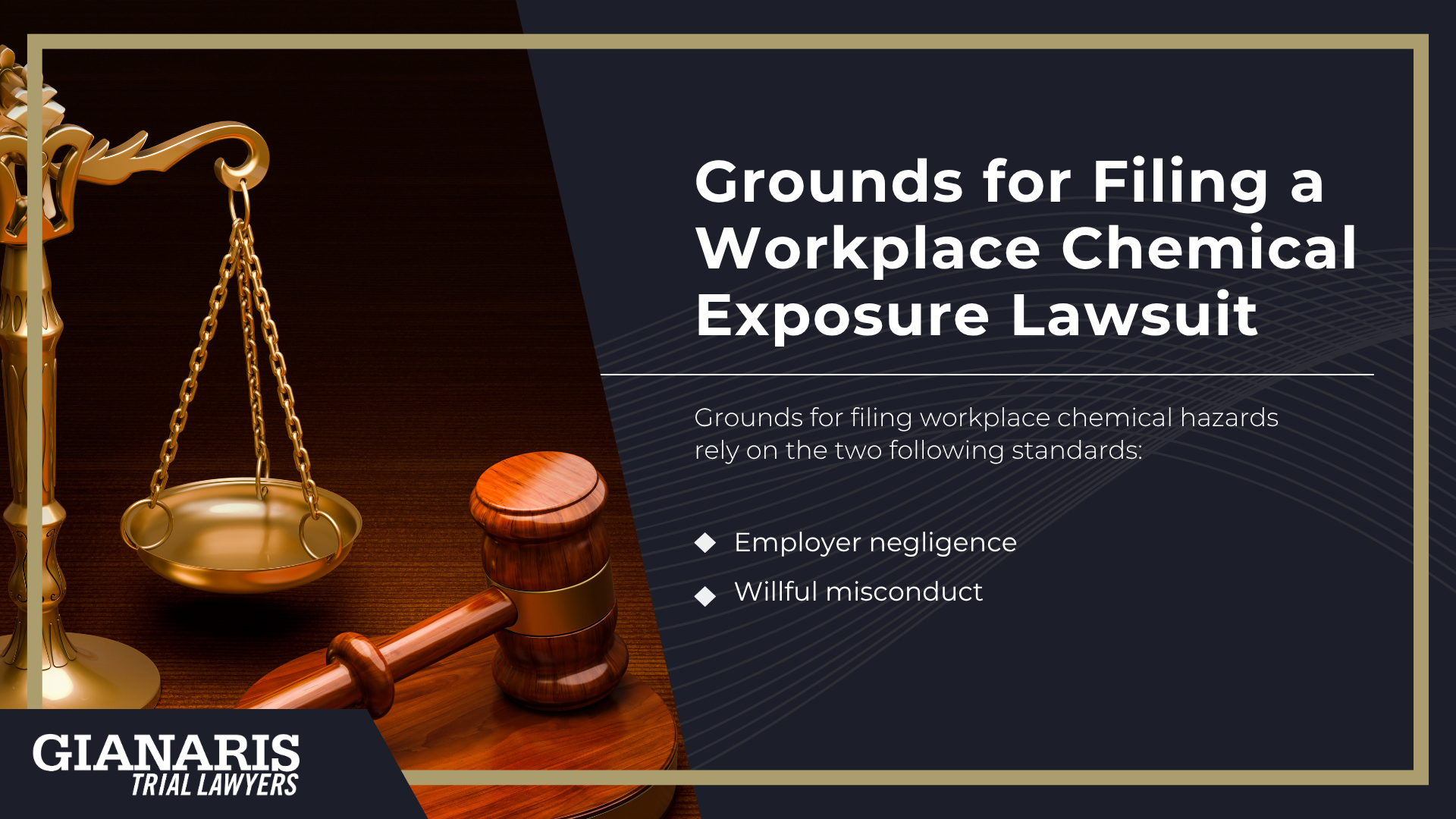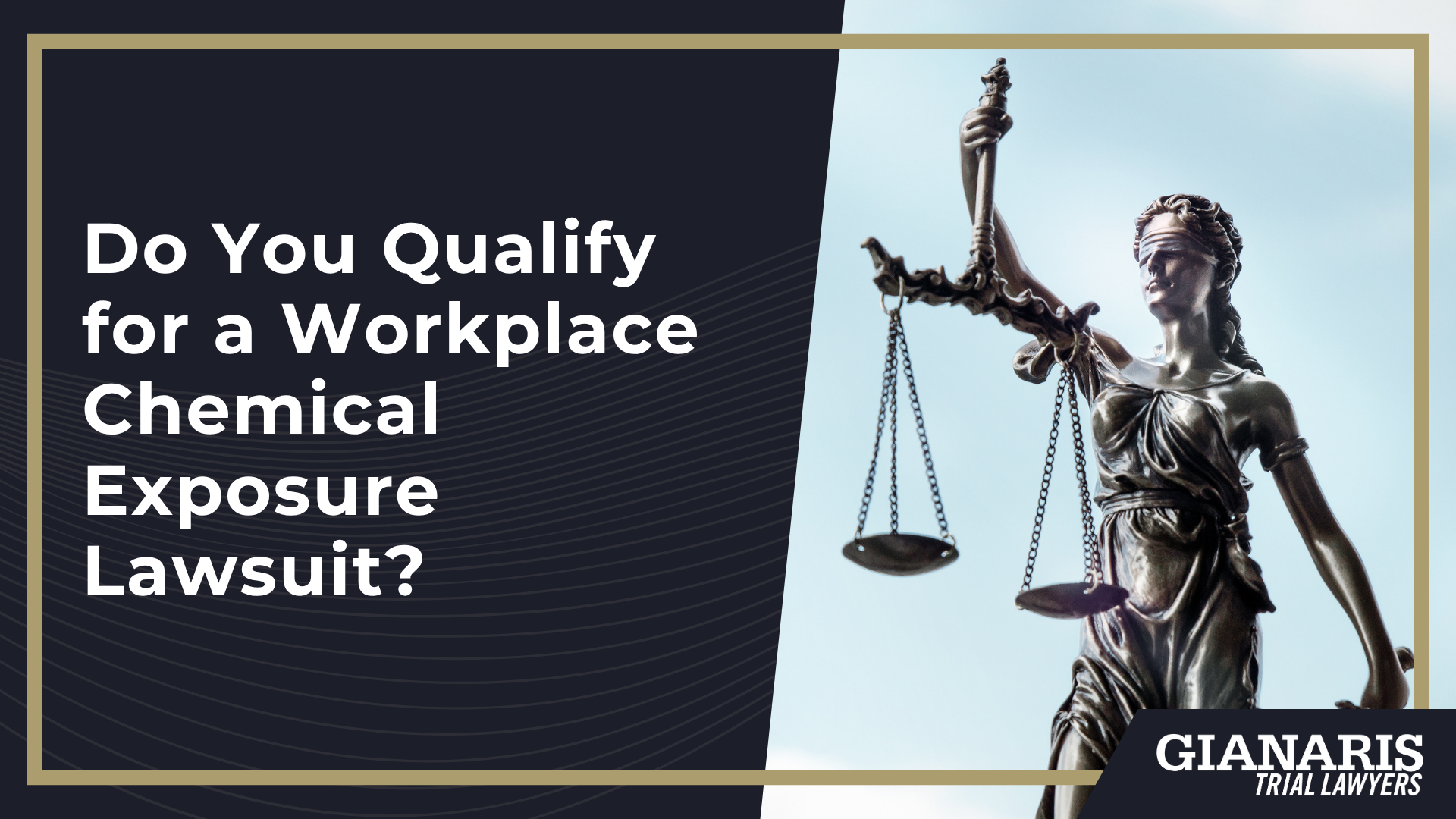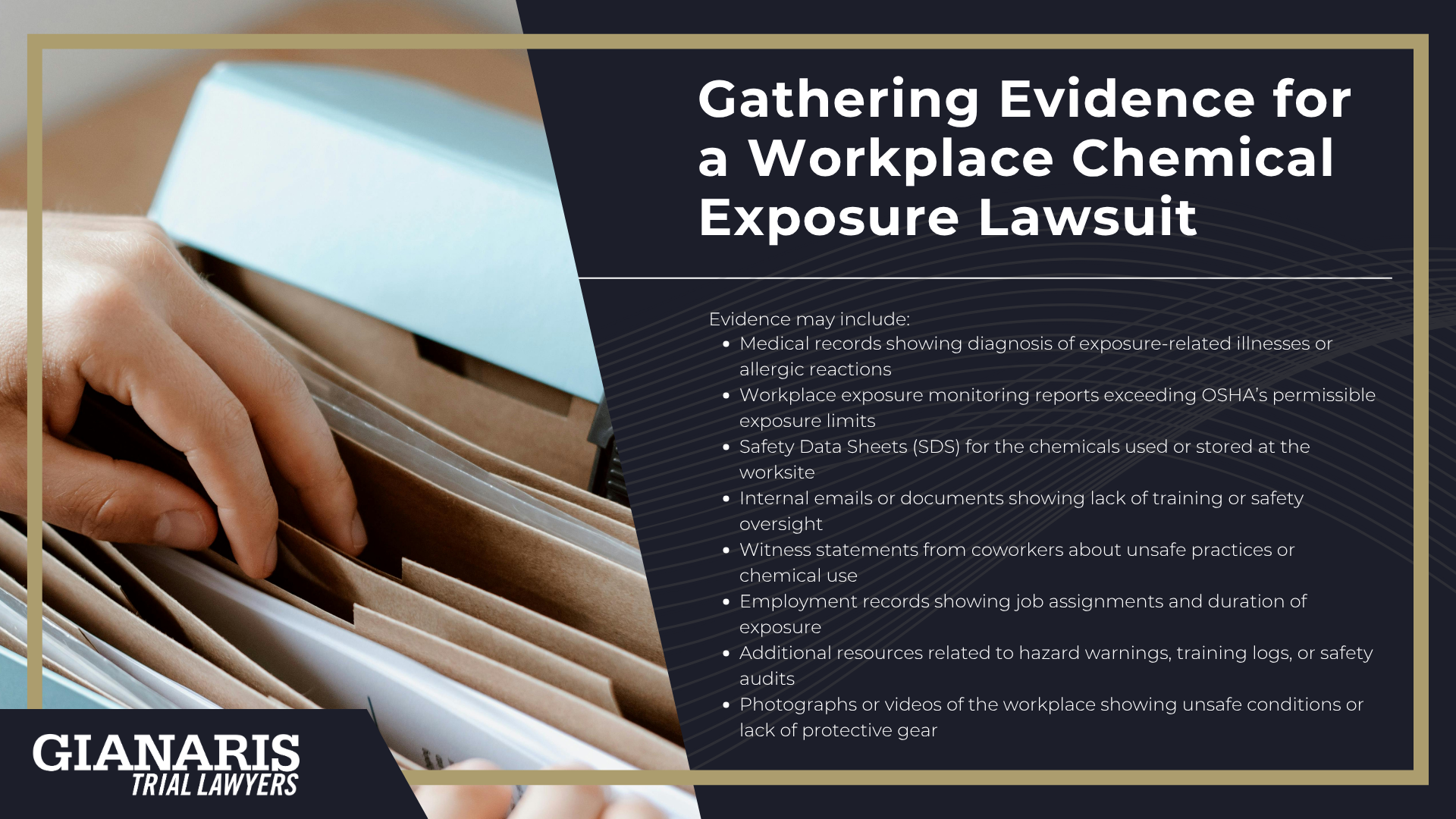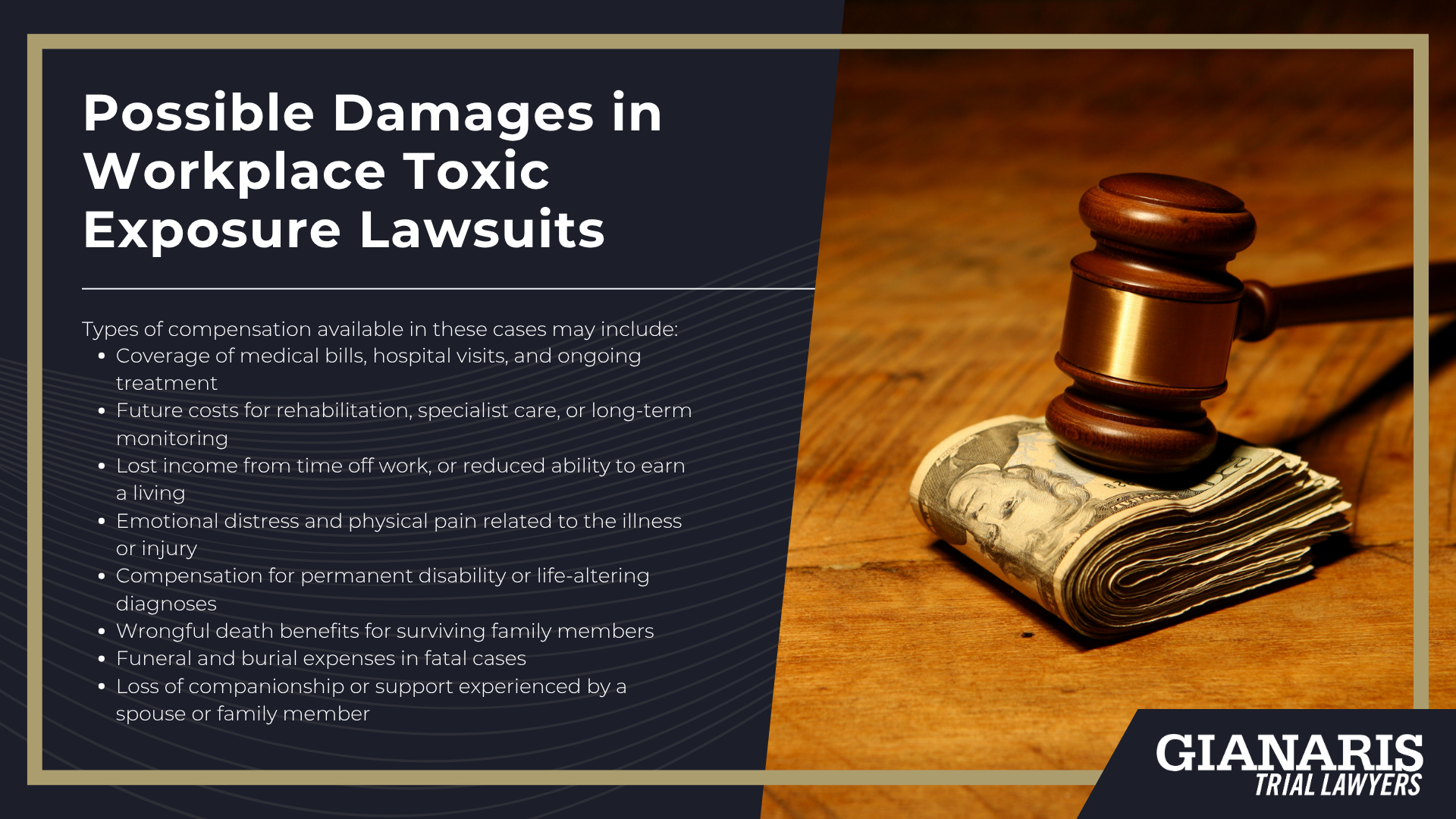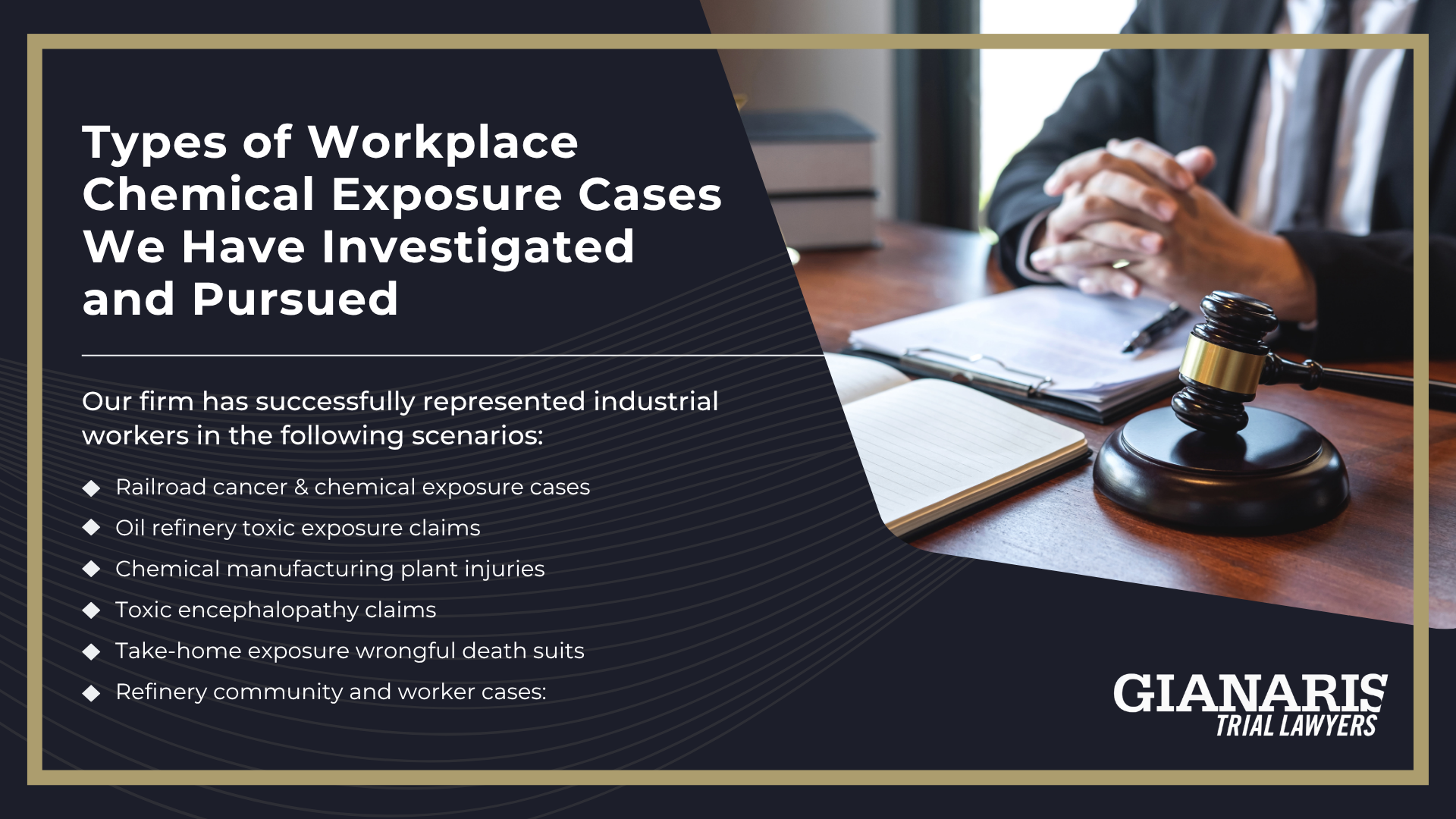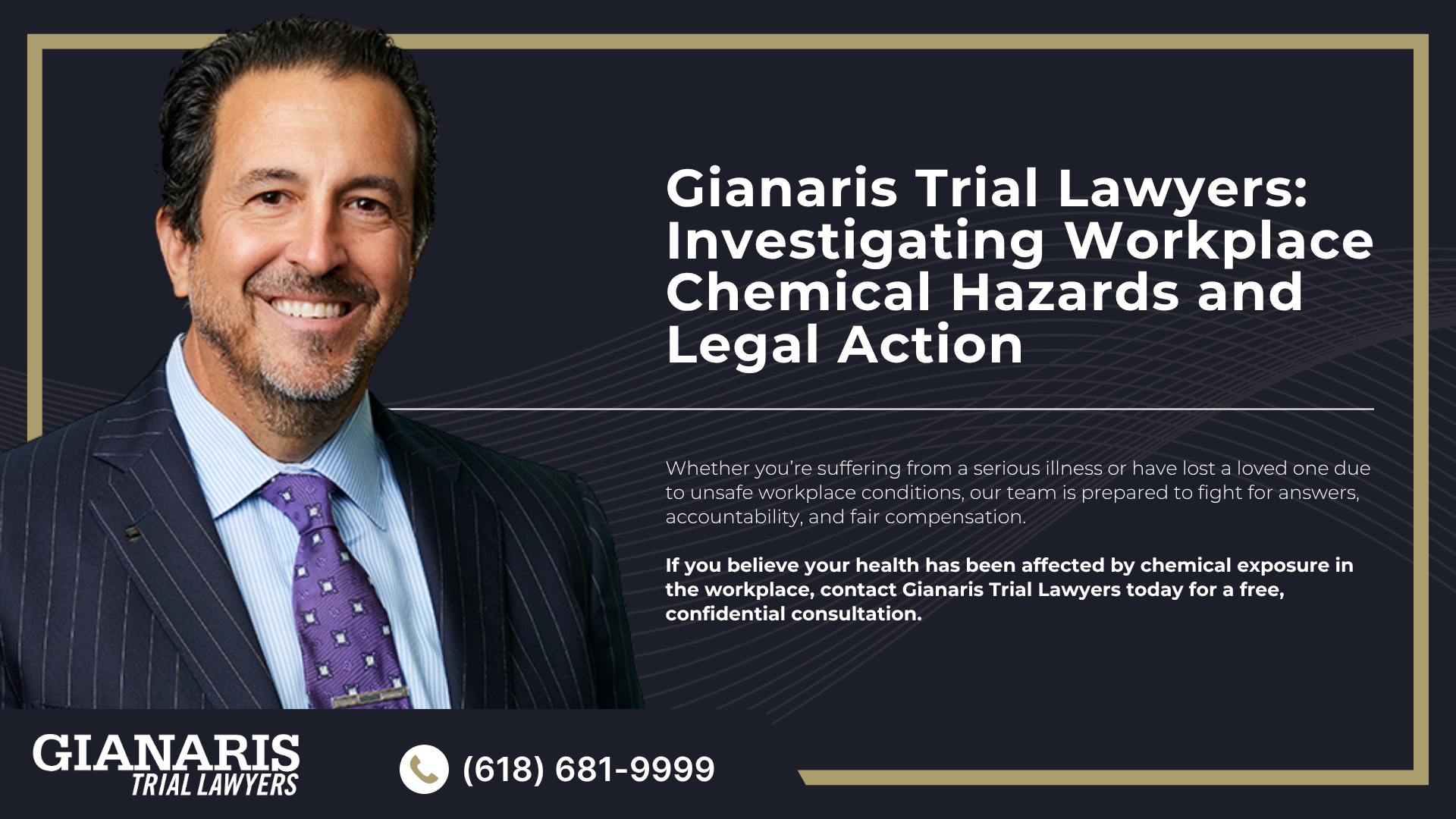In workplaces across the country, millions of employees come into daily contact with toxic substances that have the potential to cause long-term or even fatal health problems.
These exposures often occur silently (through inhalation, ingestion, or skin contact) especially in environments where preventive measures are lacking or chemical safety protocols are ignored.
From cleaning agents and fuels to industrial solvents and heavy metals, the range of harmful substances found in American workplaces is vast and varied.
While exposure can happen in office buildings, schools, or healthcare settings, the most dangerous and sustained risks are often present in industrial workplaces.
Gianaris Trial Lawyers focuses primarily on representing workers in refineries, chemical plants, steel mills, factories, and other industrial settings, where high levels of exposure are most likely to occur.
These are environments where complex processes involving raw materials and chemicals create continuous exposure risks.
Despite oversight from agencies like OSHA and the U.S. Department of Health and Human Services, many employers fail to take meaningful steps in protecting workers, leaving them vulnerable to long-term illnesses caused by toxic exposure.
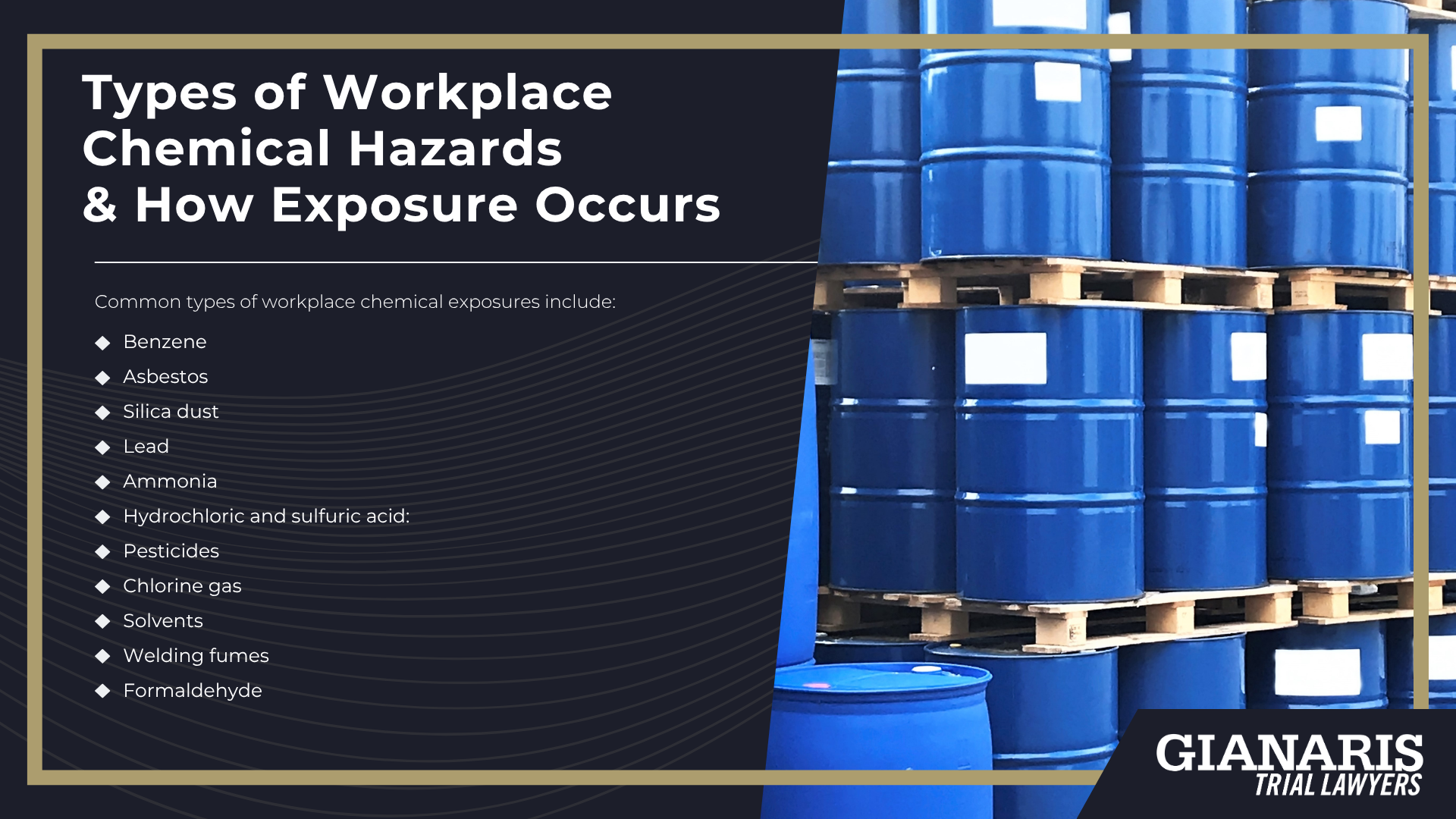
Common types of workplace chemical exposures include:
- Benzene: Found in petroleum refining, rubber manufacturing, and chemical plants; linked to leukemia and other blood disorders
- Asbestos: Present in older insulation, brake linings, and industrial building materials; common in construction, shipbuilding, and boiler maintenance
- Silica dust: Generated during cutting, grinding, or drilling of concrete, brick, or stone; widespread in construction and masonry
- Lead: Found in batteries, metal smelting, and paint removal; frequent in recycling plants and industrial painting operations
- Ammonia: Used in fertilizer production, food processing, and refrigeration; exposure occurs through leaks and inadequate ventilation
- Hydrochloric and sulfuric acid: Present in chemical manufacturing and metal cleaning; highly corrosive and harmful through skin contact or inhalation
- Pesticides: Common in agricultural and landscaping work; exposure occurs through spraying, handling, or runoff
- Chlorine gas: Used in water treatment, bleach production, and industrial disinfection; exposure risks during leaks or spills
- Solvents (e.g., toluene, xylene, acetone): Found in degreasers, paint thinners, and adhesives; widespread in manufacturing and auto repair
- Welding fumes: Contain a mix of metals and gases like manganese and hexavalent chromium; present in metal fabrication, shipyards, and heavy industry
- Formaldehyde: Used in manufacturing plastics, textiles, and resins; also present in medical and mortuary settings
These exposures often occur gradually, with symptoms developing years after regular contact with the substance.
Without strong preventive measures, workers are left to bear the consequences of their employer’s failure to implement basic protections.
Gianaris Trial Lawyers works to hold negligent companies accountable and fight for those harmed in some of the most dangerous industrial workplaces in the country.
How Can Employers Prevent or Reduce Employee Exposure to Hazardous Chemicals?
Employers can significantly enhance chemical safety by following OSHA’s well-established hierarchy of controls, which prioritizes interventions from most effective to least: elimination, substitution, engineering controls, administrative controls, and personal protective equipment.
First, companies should aim to eliminate dangerous chemicals from the process entirely or substitute them with less toxic alternatives – steps considered the most effective and fundamental under OSHA and NIOSH guidance.
Where elimination isn’t feasible, engineering controls such as fume hoods, local exhaust ventilation, or enclosed systems can physically reduce workers’ contact with toxic substances, lowering risk substantially.
Next, administrative controls (including work rotation, safe work practices, warning signs, and thorough training) can help reinforce safe behaviors and reduce occupational exposure limits violations
Finally, when other controls are insufficient, employers must provide appropriate personal protective equipment (PPE), such as respirators, gloves, and eyewear, tailored to the specific hazardous substances in use.
In addition to these controls, OSHA’s Hazard Communication Standard (HazCom) requires employers to maintain accessible Safety Data Sheets, proper labeling, and employee training on the specific chemicals they handle.
Routine monitoring and exposure testing (conducted under protocols recommended by OSHA’s Health and Human Services partners) ensure that engineering and administrative controls remain effective over time.
Safe chemical storage, spill response plans, and on-site emergency procedures further protect staff from sudden releases or accidental exposures.
By combining elimination, engineering, administrative measures, and PPE with thorough training and hazard communication, employers can create robust systems that protect workers from inhalation, skin contact, and ingestion of toxic chemicals.
When companies fail to follow these protocols, affected workers may suffer serious health effects—and may have legal grounds for pursuing compensation with the help of experienced counsel.


